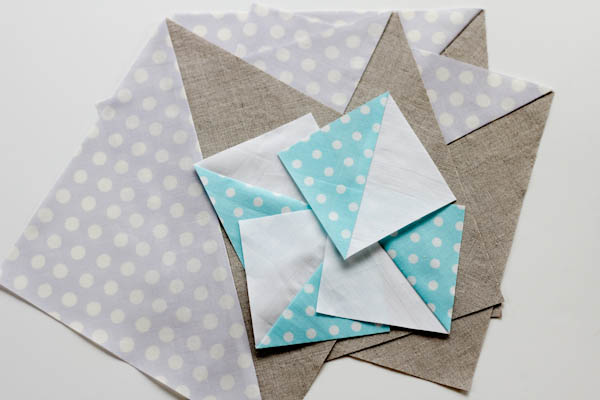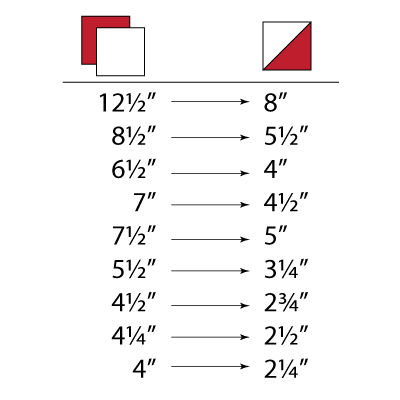Half Square Triangles
This post originally appeared on Whip-Up.net.
Hello Whip-Up readers! It’s so nice to be back in this space posting while Kathreen is away. Today I wanted to share a really great way of making half square triangles (HST) that I recently found online and give you some measurements to help you with making them just the size you need for your own projects. Ahead of me I have a quilt full of half square triangles, and I was not looking forward to the prospect of making all of them in the way i’m use to. Then I remembered having seen this video by The Missouri Star Quilt Company.
Her ingenious method of assembling HST for a pinwheel block are perfect for most HST projects I can think of. You simply take your two squares of fabric (usually a print and a solid), place them right sides together and sew around all four edges with a 1/4″ seam allowance. Then you cut the square on both diagonals and you end up with four pieces.
When you open out and iron them you get perfect half square triangles! It’s amazing every time. I recently made a bunch of these in different sizes just to get a feel for the math. I have some of the sizes figured out to get you started, but the basic math is a HST that is roughly 64% of the size of your original square. So your math would be this:
Beginning Square Size x 0.64 = HST size.
If you knew the size you needed your HST to be, but wanted to find out how big to cut your beginning squares, you would use this equation instead:
HST / 0.64 = Beginning Square Size.
Of course it’s always a good idea to make a test square before beginning a project, as all of our sewing and cutting varies. Not every size is exactly 64%, but it’s a good place to start without getting too involved in the math. Below is a table that gives you the starting square size and the final HST size for sizes that I’ve actually tested. You may find as you make these that you can get 1/8″ to 1/4″ more from each size, but I like to play it safe. So many times when I’ve made HST in the past I find that I don’t have enough to trim away and get the size stated in the pattern, so i’d rather play it safe. Good luck and have fun creating!




